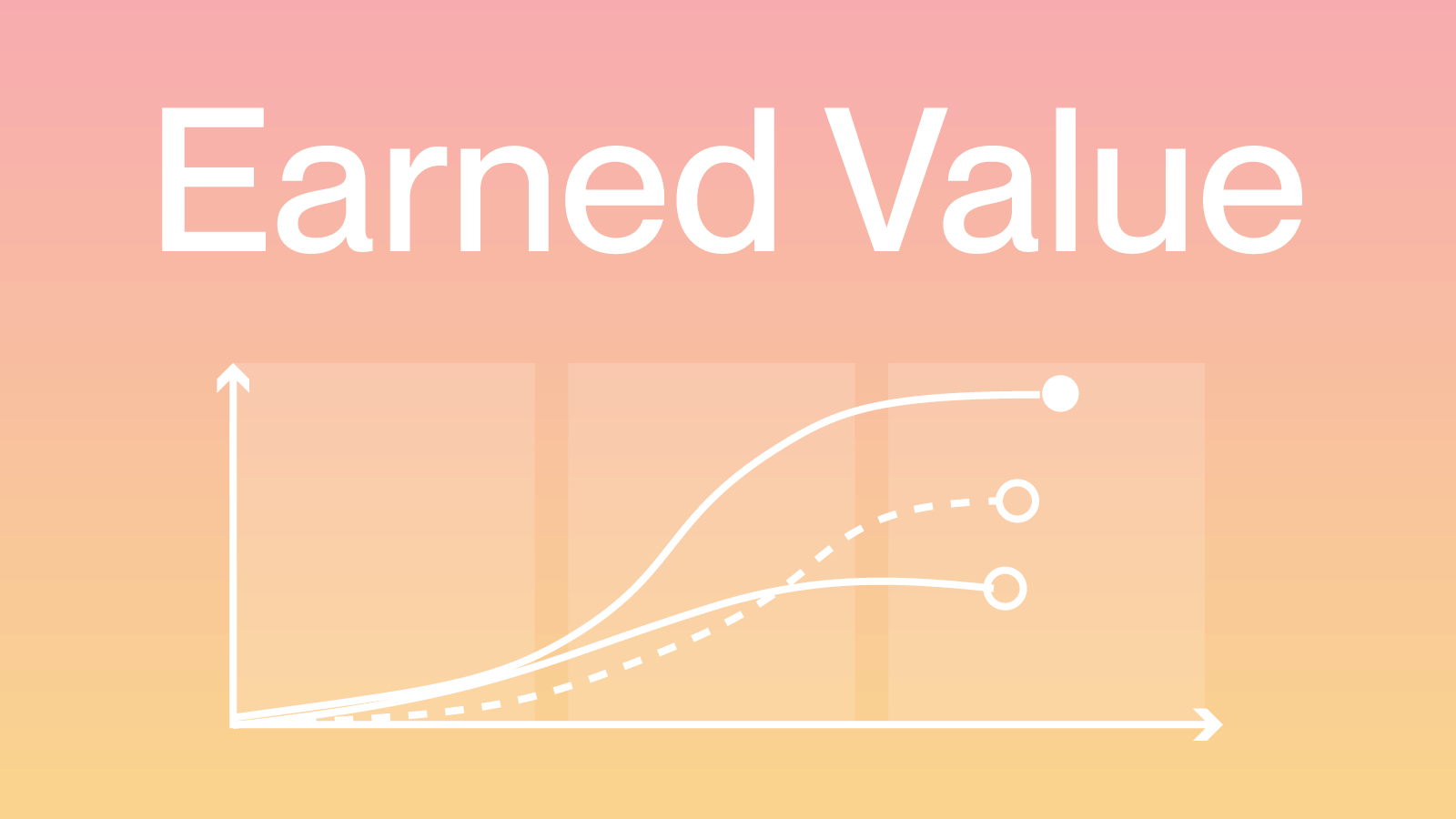Earned Value Management Concepts & Formulas Explained - Gather

Delve into the depths of project management proficiency as we present you with a comprehensive glossary, meticulously curated to encompass the very essence of Earned Value Management (EVM). This resource is designed to be your compass in navigating the intricate landscape of project performance measurement and control.
In this glossary, you'll unearth not just definitions, but keys to unlocking a whole new level of comprehension. With 100 carefully crafted entries, we leave no stone unturned in elucidating the core concepts, terms, and calculations that constitute the realm of EVM.
Whether you're a seasoned project management veteran or just embarking on your journey, our glossary promises to be an indispensable companion
A-D
Actual Cost (AC)
The realized cost incurred for the work completed up to a given point in time.
Actual Cost (AC) refers to the real cost incurred for completing the work up to a specific date or milestone. It includes all direct and indirect costs associated with the project, such as labor, materials, and overhead expenses. AC provides an accurate measure of the actual expenses incurred and is used for cost performance analysis.
Actual Cost of Work Performed (ACWP)
The actual cost incurred for the work performed.
Actual Cost of Work Performed (ACWP), also known as Actual Cost (AC), represents the actual cost incurred for the work performed up to a specific point in time. It includes all the direct and indirect costs associated with the completed work. ACWP is used for measuring actual cost performance.
Baseline
The original approved plan for the project.
Baseline refers to the original approved plan for the project, including the schedule, budget, and scope. It serves as a reference point for measuring project performance and is used for comparison against actual progress and performance. Baseline provides a basis for assessing deviations and managing changes during the project.
Budget at Completion (BAC)
The total budgeted cost for the project.
Baseline refers to the original approved plan for the project, including the schedule, budget, and scope. It serves as a reference point for measuring project performance and is used for comparison against actual progress and performance. Baseline provides a basis for assessing deviations and managing changes during the project.
Budgeted Cost for Work Performed (BCWP)
The total budgeted cost for the project.
Budgeted Cost for Work Performed (BCWP), also known as Earned Value (EV), represents the budgeted cost of the work actually performed up to a specific point in time. It indicates the value of the work that has been completed. BCWP is used for measuring earned value and assessing project progress.
Calculation: BCWP = Earned % Complete * BAC
Budgeted Cost for Work Scheduled (BCWS)
The planned budgeted cost for the work scheduled to be performed.
Budgeted Cost for Work Scheduled (BCWS), also known as Planned Value (PV), represents the planned budgeted cost for the work scheduled to be performed up to a specific point in time. It indicates the value of the work that was planned to be accomplished. BCWS is used for measuring schedule performance.
Calculation: BCWS = Planned % Complete * BAC
Control Account (CA)
A management control point for measuring cost and schedule performance.
Control Account (CA) serves as a management control point within a project. It is used to measure cost and schedule performance, and it represents a significant portion of the project work. CAs are typically associated with specific deliverables or milestones and provide a higher level of control and visibility.
Control Account Manager (CAM)
The individual responsible for managing a control account.
Control Account Manager (CAM) is the individual assigned the responsibility of managing a control account within a project. CAM oversees the performance, budget, and schedule of the assigned control account, ensures proper execution of the work, and reports progress to the project management team. CAM plays a key role in controlling and monitoring project activities.
Cost Baseline
The approved, time-phased budget for the project.
Cost Baseline represents the approved, time-phased budget for the project. It serves as a reference point for comparing and controlling project costs. Cost baseline includes the authorized funding allocated to different project activities and provides a basis for measuring cost performance and variances.
Cost Estimate
The projected or actual monetary value assigned to project activities.
Cost Estimate refers to the projected or actual monetary value assigned to project activities. It involves estimating the costs associated with resources, materials, labor, and other expenses required to complete the project. Cost estimation helps in budgeting, forecasting, and controlling project expenditures.
Cost Estimate at Completion (CEAC)
The projected total cost of the project based on cost estimates.
Cost Estimate at Completion (CEAC) represents the projected total cost of the project based on cost estimates. It considers the estimated cost of the remaining work to estimate the final project cost. CEAC helps in assessing the projected total cost based on cost-based estimates.
Cost Estimate to Complete (CETC)
The projected cost required to complete the remaining work based on cost estimates.
Cost Estimate to Complete (CETC) represents the projected cost required to complete the remaining work based on cost estimates. It considers the estimated cost of the remaining work to estimate the total project cost. CETC helps in assessing the remaining work cost and forecasting the project's total cost using cost-based estimates.
Cost Performance Index (CPI)
The ratio of earned value (EV) to actual cost (AC). It indicates cost efficiency.
Cost Performance Index (CPI) measures the cost efficiency of the project by comparing the earned value (EV) to the actual cost (AC) incurred. A CPI value greater than 1 indicates cost efficiency, while a value less than 1 suggests cost overruns. CPI helps in evaluating cost control measures.
Calculation: CPI = EV / AC
Cost Performance Index Forecast (CPI Forecast)
The projected efficiency of cost performance based on the latest performance data.
Cost Performance Index Forecast (CPI Forecast) represents the projected efficiency of cost performance based on the latest performance data. It measures the ratio of the earned value (EV) to the actual cost (AC) at a specific point in time. CPI Forecast helps in forecasting the cost performance for the remainder of the project.
Calculation: CPI Forecast = EV / AC
Cost Performance Index at Completion (CPIC)
The projected efficiency of cost performance at project completion.
Cost Performance Index at Completion (CPIC) represents the projected efficiency of cost performance at project completion. It measures the ratio of the earned value (EV) to the actual cost (AC) at completion. A CPIC greater than 1 indicates favorable cost performance, while a value less than 1 suggests unfavorable performance. CPIC helps in assessing the overall efficiency of cost performance.
Calculation: CPIC = EV / AC
Cost Variance (CV)
The difference between earned value (EV) and actual cost (AC). Positive value indicates cost savings.
At the heart of project financial analysis lies the concept of Cost Variance (CV), a critical metric that serves as a barometer for the financial health of a project. CV is essentially the arithmetic difference between the budgeted or planned cost of work and the actual cost incurred. This figure can either be positive, indicating that a project is under budget, or negative, suggesting an overage and a potential red flag for project managers.
Understanding CV is pivotal for maintaining control over a project's budget and ensuring that resources are being utilised efficiently. Here are the key points to grasp about CV:
- It measures the financial performance of a project at a given point in time.
- A positive CV indicates a cost saving, whereas a negative CV points to a cost overrun.
- Regular monitoring of CV allows for timely interventions and corrective actions.
By integrating CV analysis into regular project reviews, managers can make informed decisions, steering their projects towards successful completion within the allocated budget.
Calculation: CV = EV - AC
Cost Variance at Completion (CVAC)
The projected difference between the earned value and the actual cost at project completion.
Cost Variance at Completion (CVAC) represents the projected difference between the earned value (EV) and the actual cost (AC) at project completion. It indicates whether the project is expected to be under or over budget based on the current performance. A positive CVAC indicates cost savings, while a negative CVAC suggests cost overruns. CVAC helps in assessing the overall cost performance of the project.
Calculation: CVAC = BAC - AC
Critical Path Method (CPM)
A project scheduling technique that determines the longest path of activities.
Critical Path Method (CPM) is a project scheduling technique that determines the longest path of activities and identifies the sequence of tasks that must be completed on time to ensure the project's timely completion. It helps in understanding the project's duration, identifying critical activities, and managing schedule dependencies.
Data Date
The specific date used as a reference point for performance measurement.
Data Date represents the specific date used as a reference point for performance measurement and reporting. It is the cutoff date for capturing project data and assessing progress. The data date helps in establishing the time frame for evaluating project performance and comparing it against the planned values.
E-J
EVM Index
A performance measurement index that integrates cost and schedule performance.
EVM Index, also known as the Cost-Schedule Index (CSI), is a performance measurement index that integrates cost and schedule performance. It indicates the efficiency at which the project is being executed by comparing the earned value (EV) to the actual cost (AC). An EVM Index greater than 1 indicates favorable performance, while a value less than 1 suggests unfavorable performance. EVM Index helps in evaluating the overall project performance.
Calculation: EVM Index = EV / AC
Earned Schedule (ES)
A technique that measures schedule performance based on earned value.
At the heart of Earned Value Management (EVM) lies the concept of Earned Schedule (ES), a powerful tool that extends the traditional EVM approach to better manage and measure project time performance. Earned Schedule provides a more accurate reflexion of project schedule performance by translating monetary metrics into time-based measurements. This allows project managers to gain a clearer understanding of the time implications of their project's progress.
To grasp the fundamentals of Earned Schedule Analysis, consider the following key points:
- It integrates with the existing EVM system, using the same data to offer a time-based perspective.
- ES is calculated by identifying the Planned Value (PV) that should have been earned by a certain date and comparing it to the Actual Earned Value (EV) of work completed.
- The difference between the PV and EV is then analysed to determine the project's schedule performance.
By adopting Earned Schedule Analysis, project managers can more effectively monitor project timelines, anticipate potential delays, and implement timely corrective actions. It serves as a comprehensive guide to Earned Value Analysis in construction projects, explaining its importance, components, and how to use it for effective project monitoring and cost control.
Key takeaways
Related blogs you may like
Stay ahead of the curve
Our monthly email newsletter keeps you up-to-date with best practices in project management, contech implementation and NEC4.




